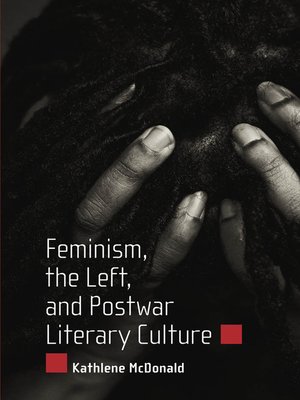
Sign up to save your library
With an OverDrive account, you can save your favorite libraries for at-a-glance information about availability. Find out more about OverDrive accounts.
Find this title in Libby, the library reading app by OverDrive.



Search for a digital library with this title
Title found at these libraries:
| Library Name | Distance |
|---|---|
| Loading... |
This book traces the development of a Left feminist consciousness as women became more actively involved in the American Left during and immediately following World War II. McDonald argues that women writers on the Left drew on the rhetoric of antifascism to critique the cultural and ideological aspects of women's oppression. In Left journals during World War II, women writers outlined the dangers of fascist control for women and argued that the fight against fascism must also be about ending women's oppression. After World War II, women writers continued to use this antifascist framework to call attention to the ways in which the emerging domestic ideology in the United States bore a frightening resemblance to the fascist repression of women in Nazi Germany.
This critique of American domestic ideology emphasized the ways in which black and working-class women were particularly affected and extended to an examination of women's roles in personal and romantic relationships. Underlying this critique was the belief that representations of women in American culture were part of the problem. To counter these dominant cultural images, women writers on the Left depicted female activists in contemporary antifascist and anticolonial struggles or turned to the past, for historical role models in the labor, abolitionist, and antisuffrage movements. This depiction of women as models of agency and liberation challenged some of the conventions about femininity in the postwar era.
The book provides a historical overview of women writers who anticipated issues about women's oppression and the intersections of gender, race, and class that would become central tenants of feminist literary criticism and black feminist criticism in the 1970s and 1980s. It closely considers works by writers both well-known and obscure, including Lorraine Hansberry, Alice Childress, Martha Dodd, Sanora Babb, and Beth McHenry.







